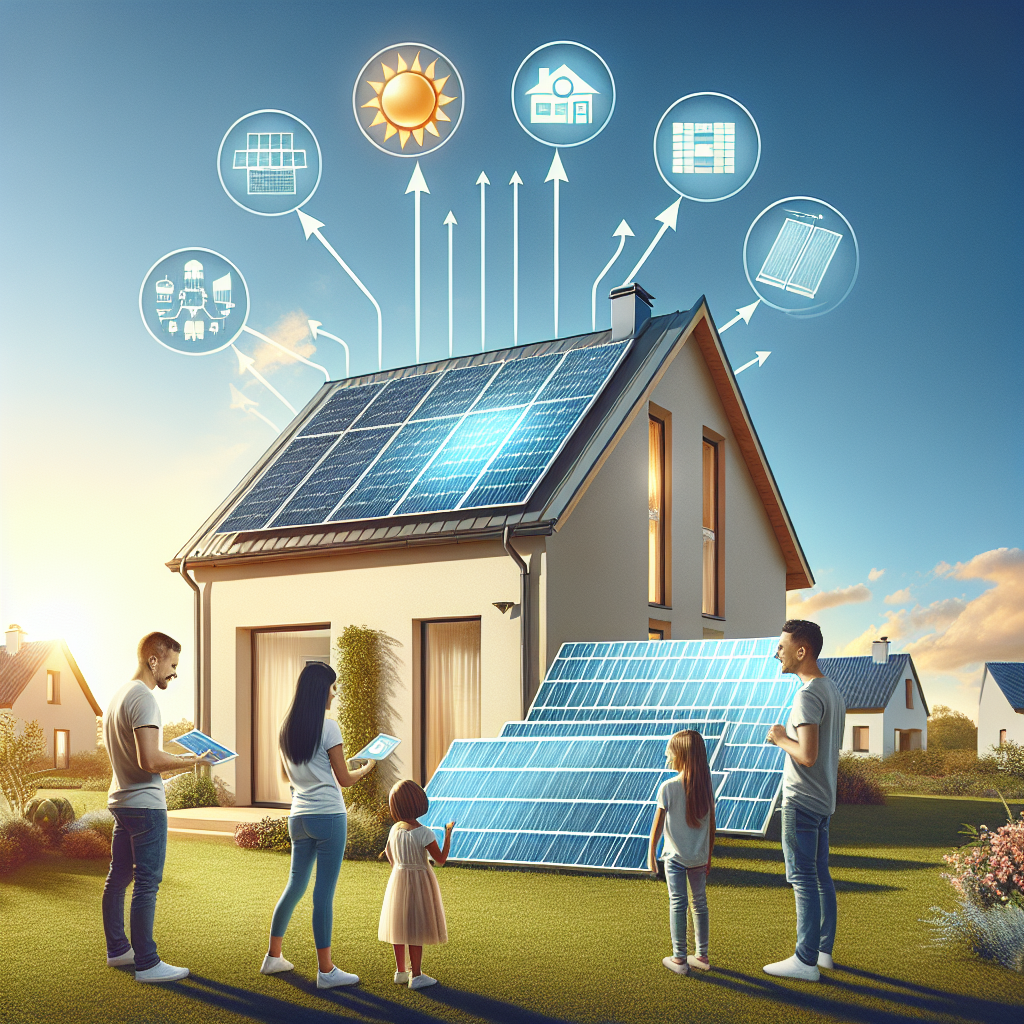As homeowners increasingly turn to renewable energy, the decision to install a solar system is becoming more popular than ever. Not only does it contribute to a greener planet, but it also can lead to significant savings on your electricity bills. However, with a multitude of options available, choosing the right solar system for your home can be daunting. This article aims to simplify the process and ensure you make an informed decision.
Understanding Your Energy Needs
Before diving into the technicalities of solar systems, it’s crucial to understand your energy consumption. Take a close look at your electricity bills over the last year to gauge your average monthly usage. This information will provide a solid foundation for determining the size and type of solar system you need.
Calculate Your Energy Needs
A simple formula to get your energy requirements is:
- Monthly Usage: Sum up all your monthly energy use in kilowatt-hours (kWh).
- Daily Usage: Divide that number by 30 to find your daily use.
- Peak Sunlight Hours: Research how many peak sunlight hours your location receives daily.
Using this information can guide you in selecting a system that meets your energy goals.
Types of Solar Systems
Selecting the right solar system isn’t only about size; it’s also about the type of system that fits your needs and lifestyle. Here are the main types of solar systems:
Grid-Tied Solar System
This is the most common type of solar system for homes. Grid-tied setups allow you to connect your solar panels directly to the local utility grid. If your system generates more electricity than you use, you can sell the excess back to the utility company, making it an economical option.
Off-Grid Solar System
For those living in remote areas without access to the electrical grid, an off-grid solar system is a perfect solution. It’s composed of solar panels, batteries, and an inverter to convert DC to AC electricity. While more costly upfront due to battery storage solutions, an off-grid system can grant you complete energy independence.
Hybrid Solar System
Combining elements of both grid-tied and off-grid systems, hybrid solar systems offer the benefits of battery storage while still being connected to the grid. If the grid goes down, a hybrid system ensures you still have power at home, making it a reliable option for unpredictable areas.
Assessing Space and Location
Roof Space
Evaluate the roof or the ground space available for installing solar panels. The efficiency of the solar panels can also be impacted by orientation and tilt. Ideally, panels should face south and have a tilt for optimal energy capture.
Shade Consideration
Trees, buildings, or other structures that produce shade should be assessed, as they can significantly reduce the panels’ efficiency. Solar panel placement is critical; ensuring ample sunlight can make a big difference in performance.
Choosing the Right Solar Panels
With various types of solar panels available, it’s essential to choose wisely. Here are the main types you’ll encounter:
Monocrystalline Panels
Known for their high efficiency and durability, monocrystalline panels are made from single-crystal silicon. While they tend to be pricier than other options, they require less space, making them ideal if roof area is limited.
Polycrystalline Panels
These panels are made from multiple silicon crystals and are generally more affordable than monocrystalline options. Although they are slightly less efficient, they offer good performance and are a popular choice for budget-conscious homeowners.
Thin-Film Panels
Thin-film technology involves a light, flexible material that’s often less efficient than silicon-based panels. However, they are cheaper to manufacture and may be suitable for unique installations where lightweight materials are advantageous.
Understanding Incentives and Financing Options
Solar energy can be a big investment, but various financing options and government incentives can ease the financial burden:
Federal Tax Credit
In many regions, a federal tax credit allows you to deduct a significant percentage of your solar setup costs from your taxes. Research local and state incentives as well to maximize savings.
Solar Loans and Leases
- Loans: Allow you to purchase the solar system outright and pay for it over time.
- Leasing: A cost-effective method to use solar energy without the high upfront costs, on a fixed monthly payment basis.
Finding the Right Installer
Once you’ve reached an understanding of your needs and budget, finding a reputable solar installer is key. Look for companies that provide:
- Experience and certifications
- Comprehensive warranties
- Transparent pricing without hidden fees
- Positive customer reviews and testimonials
Conclusion
Choosing the right solar system for your home is a well-informed decision when you understand your energy needs, assess available options, and seek out professionals who can help you along the way. Embrace the journey of transitioning to renewable energy, not only to save money but also to contribute positively to a sustainable future. With careful planning and research, you’ll be sunbathing under the benefits of solar energy in no time!
By prioritizing human-centered content, this article aims to equip you with the necessary knowledge to make your solar energy dreams a reality. Explore your options, conduct thorough research, and let the sun work for you!


